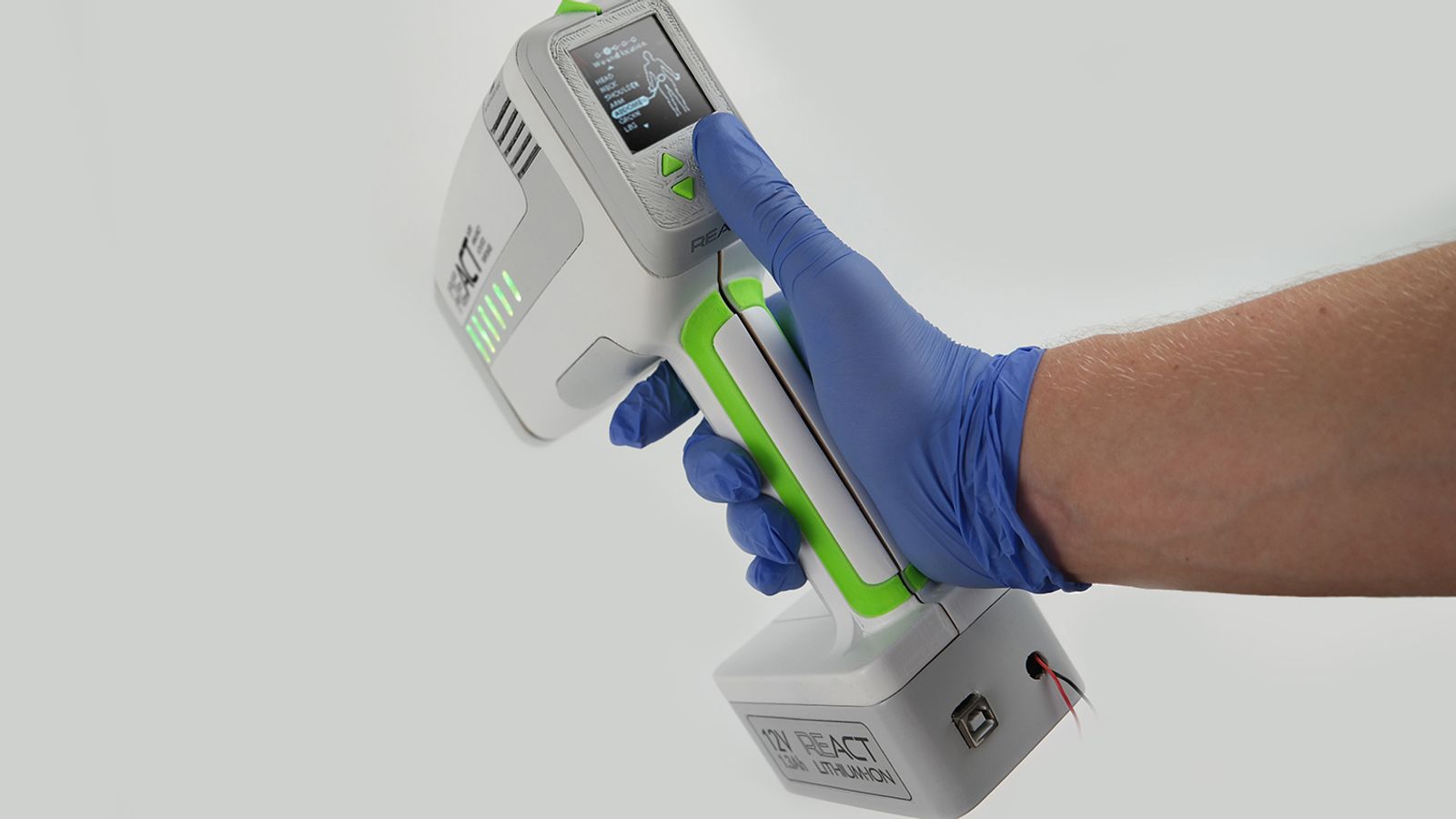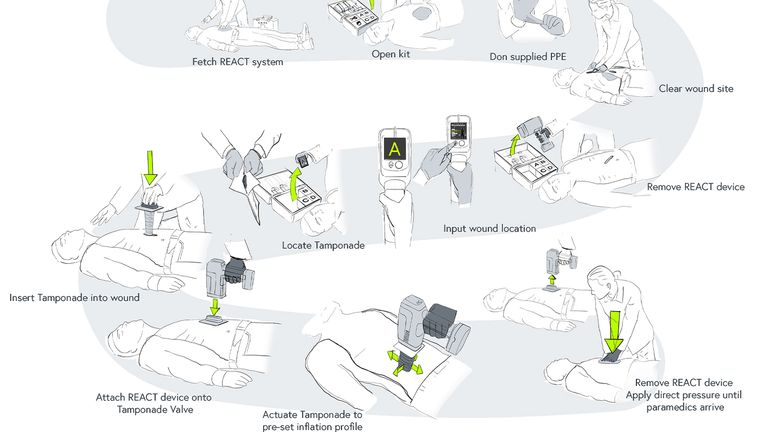A university student has designed a device that can rapidly stop catastrophic blood loss from stab wounds.
The device uses pressure to prevent bleeding, targeting areas that are usually difficult to treat, such as the armpit, groin and abdomen.
It is made up of a silicon sleeve and a handheld device.
The sleeve – a tamponade – is put into the wound and then connected to the handheld device – called an actuator.
After the wound is found by the actuator, it inflates to a defined pressure to prevent internal bleeding.
It was designed by Joseph Bentley, a product design and technology student at Loughborough University.
He said that the prototype, called REACT, is quicker and more effective than the traditional method of wound packing.
Wound packs are used by paramedics but police are often first on the scene at a stabbing so Mr Bentley said he wanted to create a product they could easily use.
A stabbing victim can bleed to death in as little as five minutes, so the priority is to stop blood loss as quickly as possible.
Mr Bentley said: “Police and paramedics normally use a bleed control kit that contains gauze that they press into the wound with large amounts of force.
“In some circumstances, the gauze can be pushed into the wound in a procedure known as wound packing.
“This gauze fills up the space inside the wound, providing internal pressure to the site and pinching close any potential severed arteries.
“This is not viable in wounds in a cavity like the abdomen, as you would run out of gauze trying to fill up the empty space.”
Mr Bentley said REACT is “quicker and simpler” than wound packing, which can take up to a minute and must be removed and re-done if it is not tight enough the first time.
He also said that the device can be safely and easily removed in surgery, unlike gauze.
“When surgeons try and remove gauze from a wound, it often rips out the blood clot with it, causing bleeding to resume.
“REACT works like the balloon on the inside of papier mache, and can be removed safely leaving the clot intact.”
Mr Bentley has filed for a UK patent for REACT and aims to develop the prototype to include wounds in other parts of the body.

